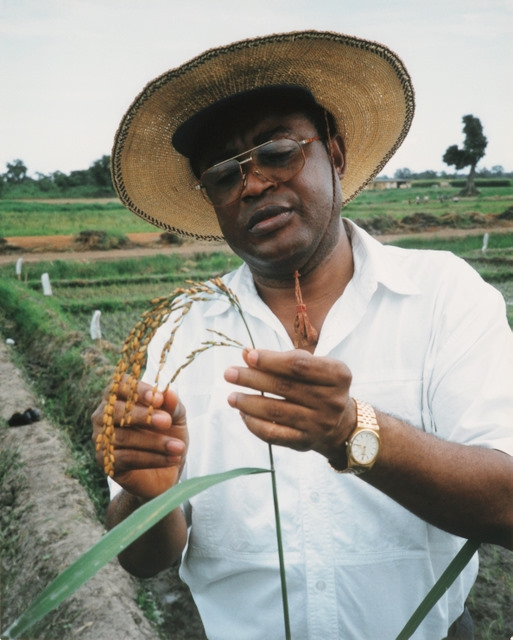
You Ain’t Seen Nothing Yet!
25th Anniversary Essay by 2004 WFP Laureate Monty Patrick Jones
I was challenged to look back over the past 25 years and describe the most significant breakthrough in global food security shaping our world today. For me, the greatest breakthrough was summed up by Jules Pretty when she said that “everything you know about African agriculture is wrong.”
Today, most food aid goes to Africa—but other continents become increasingly hungry each day. By 2050, the world will have to feed 9 billion people, one billion of them in Africa. That is 2 billion people more than the population we already struggle to feed today. To ensure global food security, food production clearly must increase.
Producing more food requires land, water and labor, and Africa has the greatest untapped reserves of those resources. It requires the energy of young people, and soon one quarter of all young people on Earth will be African. It requires the ability to raise yields and reduce post-harvest losses, and again, the greatest opportunity to do so lies in Africa. Ultimately, producing more food also requires capital to invest—and where are economies growing faster, with more inward investors seeking opportunities, than in Africa?
In short: there is no hope of producing the extra food needed to reduce hunger and feed 2 billion more humans unless Africa gets its agricultural act together.
It is, therefore, most fortunate that African agriculture is not the basket case that it was once thought to be. While it is true productivity is still not growing fast enough to overtake the rate of population growth, it has certainly improved over the last decade. So while the per capita food availability has yet to improve, there has been significant improvement in total factor productivity—and that improvement is accelerating.
I hope that will allay the fears of those who might otherwise be distressed at having to depend on Africa to prove Malthus wrong. However, if the pessimists could peer over the horizon, I believe they would agree that we are on the cusp of a new positive age in agriculture.
I believe that, properly applied, modern genetic techniques could contribute significantly to increasing food supply and making it more secure. However, I see even greater emerging opportunities. As an example, farms in Saudi Arabia are producing up to 3 million liters of milk per day from 75,000 cows. Disease management issues make this accomplishment virtually impossible to replicate in a moist environment. Today, however, it can only be achieved in desert locations with fresh water desert aquifers.
But low pressure, and therefore lower cost, desalination plants are entering pilot production and soon a convergence of declining costs for desalinated water and rising food prices may allow coastal deserts such as the Namib to bloom. As such, all the food production and greenhouse gas equations will have to be recalculated.
Low cost desalination is only one of the many revolutionary technologies applicable to agriculture that will be rolled out in the near future. Consider also nano technology, the use of algae for biofuel, the improved efficiency in capturing sunlight and the ability to generate electricity from infrared radiation which is emitted from any mass that is warmer than its surroundings, including the earth at night. If homes today can run everything—ovens, fridges, lawn mowers and cars—on hydrogen made from tap water and sun light, what are the limits? Man’s ingenuity is endless, and reason for optimism is boundless by the same measure.
Perhaps the only thing standing in the way of progress is the stupidity of humans in their dealings with each other. Were it not for war, and the threat of war, we would find that this planet has many opportunities to improve food production, and Africa can lead the way in realizing them.


